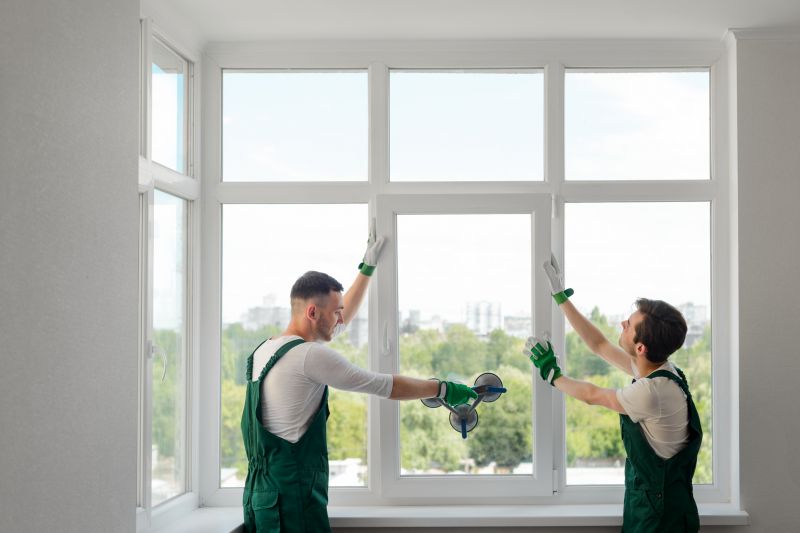Top-Rated Windows Installation Devices And Accessories
Browse a selection of highly rated products designed to support and streamline your Windows installation process.
 Installing or upgrading windows often requires a variety of products to ensure proper fit, function, and aesthetics. From the initial preparation to the final sealing, there are numerous components involved in a successful window installation. These include weatherproofing materials, mounting hardware, insulation, and finishing accessories. Selecting the right products can improve the durability and energy efficiency of the installation, as well as enhance the overall appearance of the finished project.
Installing or upgrading windows often requires a variety of products to ensure proper fit, function, and aesthetics. From the initial preparation to the final sealing, there are numerous components involved in a successful window installation. These include weatherproofing materials, mounting hardware, insulation, and finishing accessories. Selecting the right products can improve the durability and energy efficiency of the installation, as well as enhance the overall appearance of the finished project.
Top Overall Option
Universal Window Installation Kit
A comprehensive kit that includes essential hardware, sealants, shims, and weatherproofing materials designed for a wide range of window types and sizes. This all-in-one solution simplifies the installation process by providing compatible components in a single package, making it suitable for both DIY projects and professional use.
Types of Products For Windows Installations
Weatherproofing Tape
Adhesive tapes designed to create a waterproof seal around window frames, preventing air and water leaks.
Sealants and Caulks
Flexible compounds used to seal gaps and joints, enhancing insulation and protecting against moisture.
Shims and Spacers
Thin pieces of material used to level and position windows during installation.
Mounting Brackets and Anchors
Hardware components that secure the window frame to the surrounding structure.
Insulation Foam
Expanding foam used to fill gaps around the window frame for improved thermal performance.
Finishing Trims and Casings
Decorative and protective moldings that cover the installation gaps and enhance visual appeal.
Screws and Fasteners
Durable hardware used to secure the window and related components firmly in place.
Flashing Materials
Protective barriers installed around the window to direct water away from the structure.
Weatherstripping
Materials that seal the moving parts of the window to prevent drafts and leaks.
Vapor Barriers
Materials used to control moisture transfer and prevent condensation inside wall cavities.
Window Capping
Protective covers that shield the window frame from weather elements and damage.
Lintels and Support Beams
Structural components that provide support above window openings.
Glass and Glazing Units
The actual window panes, available in various thicknesses and coatings for different needs.
Window Locks and Security Devices
Hardware for securing windows and enhancing safety.
Cleaning and Maintenance Products
Specialized cleaners and protectants for window surfaces and hardware.
Popular Choices
Widely used for sealing gaps around window frames and preventing drafts.
Commonly chosen for its flexibility and durability in sealing joints.
Used as a backing for sealants in larger gaps for better adhesion.
Popular for leveling and aligning windows during installation.
Trusted for providing secure attachment points for window frames.
Frequently used for filling cavities around window openings.
Chosen for finishing the interior and exterior appearance of windows.
Effective for sealing sash and frame gaps to improve insulation.
Commonly applied to direct water away from window openings.
Popular for enhancing window security and safety.
Often used in wall assemblies to control moisture transfer.
Selected for protecting window frames from weather exposure.
Used in larger or custom window installations for added support.
Frequently chosen for energy efficiency and sound insulation.
Popular for providing reliable security features.
Commonly used for maintaining clarity and shine on window surfaces.
Proper window installation products are designed to address different aspects of the process. For example, weatherproofing tapes and sealants help prevent air and water infiltration, while shims and mounting brackets ensure the window is level and securely positioned. Insulation materials are used to fill gaps and improve thermal performance, and finishing trims or casings provide a polished look once the window is installed. It is important to choose compatible products that work well together and suit the specific window type and installation environment.
When considering products for window installations, factors such as climate conditions, window size and type, and the existing structure should be taken into account. High-quality sealants and weatherstripping can extend the lifespan of the window and improve energy efficiency. Hardware components like anchors and screws need to be durable and appropriate for the material of the building frame. Additionally, ease of installation and compatibility with other products can save time and reduce frustration during the project.
Overall, selecting the right products for window installations involves understanding the purpose of each component and how they contribute to a successful outcome. Whether you are a DIY enthusiast or a professional contractor, having access to a comprehensive range of products can streamline the process and lead to a more reliable, long-lasting installation. Proper planning and the right product choices are essential steps toward achieving a secure and aesthetically pleasing window setup.
Key Buying Considerations
- Compatibility with your specific window type and size.
- Weather resistance and durability of materials used.
- Ease of installation, especially if DIY-ing the project.
- Compatibility with existing structural elements.
- Thermal insulation properties of sealants and insulation products.
- Flexibility and adhesion strength of sealants and weatherproofing materials.
- Aesthetic finish and how well the products blend with your building's style.
- Resistance to UV exposure and weathering over time.
- Availability of the product in appropriate sizes and quantities.
- Compatibility with other installation components for seamless integration.
- Ease of maintenance and cleaning of the installed products.
- Cost-effectiveness relative to the project scope.
- Environmental conditions such as humidity, temperature fluctuations, and exposure to elements.
- Local building codes and regulations that may influence product selection.
- Availability of professional support or guidance from suppliers.
